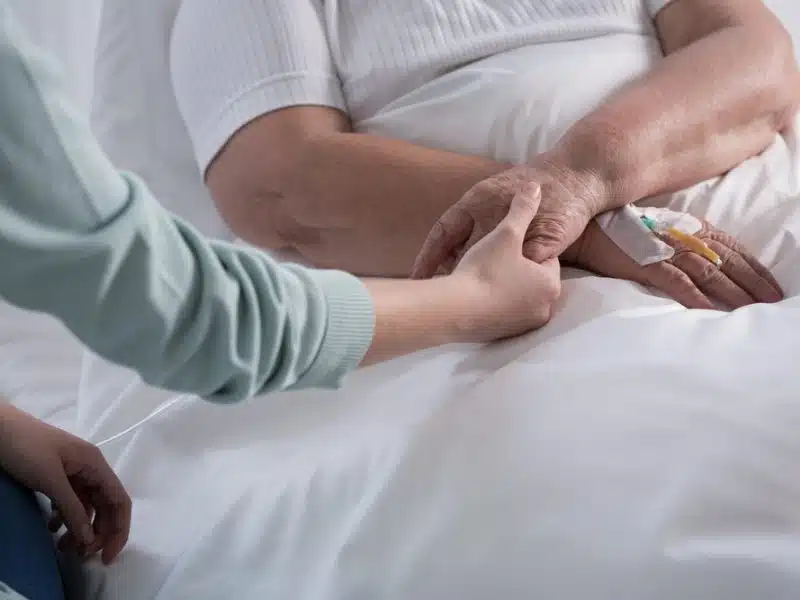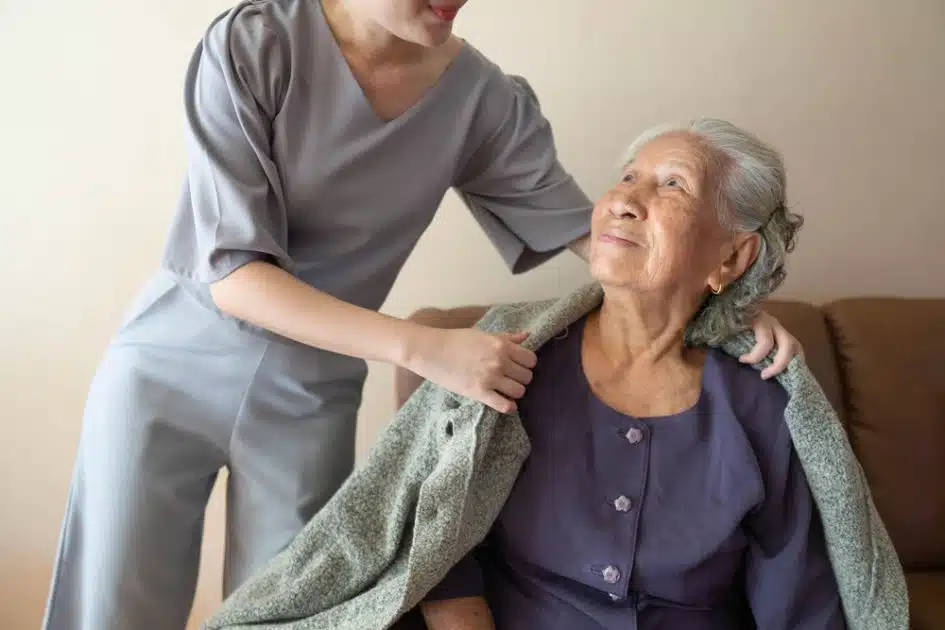Massage Therapy in Palliative Care

Enhancing Wellbeing and Comfort: The Role of Massage Therapy in Palliative Care
What is Massage 29th Jun, 2023
Massage therapy is essential in palliative care, giving comfort, relaxation, and symptom reduction to people suffering from chronic or terminal illnesses.
Massage therapy, as a systematic form of touch, provides an alternative approach to traditional treatment, addressing both bodily and emotional requirements.

We will look at the advantages, safety concerns, and practical elements of massage therapy in palliative care settings in this post.
What is Massage
Palliative Care Massage vs. Remedial Massage: What’s the Difference?
Remedial Massage Therapy
The goal of remedial massage is to restore the functioning of the damaged muscle groups by focusing on musculoskeletal system dysfunctions.
It usually focuses on certain problems, such as muscular injury brought on by improper lifting practices. A remedial massage may make use of methods like trigger point therapy, stretching, myofascial release, cupping, or dry needling.
Palliative Care Massage Therapy
On the other side, palliative care massage needs particular training to be performed on patients in a safe manner. In order to obtain the intended result, it adjusts approaches to the client’s health status and symptoms. Given the client’s sensitivity, the pressure applied during massage is often softer.
If sleeping face-down is not practicable, other postures can be employed instead, such as lying on the side, sitting, or relaxing in a chair. Palliative care massage may include modalities including acupressure, reiki, therapeutic massage, relaxation massage, and craniosacral therapy.
For best outcomes, manual lymphatic drainage (MLD) is used in conjunction with other therapies to reduce edema.
Examining the Advantages of Massage in Palliative Care
Management of Pain
It has been shown that massage treatment helps people receiving massage feel less discomfort. It promotes a higher sense of comfort and relaxation by relieving discomfort brought on by numerous diseases and therapies.
Reduced Fatigue
Patients receiving palliative treatment frequently complain of fatigue. Massage treatment, especially back massage, has been proven to be useful in lowering weariness brought on by chemotherapy and enhancing sleep.
Relief from Stress and Anxiety
The physiological relaxation brought on by massage treatment significantly lowers the sense of anxiety. After undergoing massage treatment, patients with advanced cancer have reported happier moods and less emotional stress.
Taking Care of Depression and Nausea
According to studies, massage treatment can help people receiving palliative care feel less queasy and depressed. It provides a non-invasive, drug-free method of treating these unpleasant symptoms.
Increasing Life Quality
Beyond symptom control, massage therapy seeks to enhance patients’ general quality of life. It builds a connection between the mind and body, encourages wellness, and offers emotional support through trying times.

Massage Therapy Is Safe for Chronic and Terminal Illnesses
Massage Therapy for Chronic Illnesses
Massage treatment is typically safe for those who have chronic conditions. It may be included into their treatment programs, providing support and comfort throughout the illness’s progression. If the client has cancer, it is critical to select an oncology massage therapist to guarantee optimal adjustments and individualized treatment.
Massage Therapy for Patients with Terminal Illnesses
Massage treatment is still a safe and effective choice for those suffering from terminal conditions. It can help with physical and mental support, relaxation, and pain relief. Massage therapists emphasise establishing a calming environment for the patient over applying pressure directly over or on a tumor location.
Myth Busted: Will Massage Spread Cancer Cells?
Massage treatment does not spread cancer cells, according to research. Metastasis is a natural biological phenomenon that happens in the absence of massage treatment. Massage therapists carefully regulate pressure and constantly prioritize the client’s comfort and relaxation.
The Importance of Touch in Palliative Care
In the realm of palliative care, touch plays a profound and meaningful role. When individuals are facing chronic or terminal illnesses, their physical and sensory experiences may be altered or diminished. In such instances, touch becomes a vital channel through which comfort, connection, and understanding can be conveyed.
Gentle and compassionate touch holds significant importance in palliative care, offering solace and support to those navigating the complexities of their health journey. When other senses, such as sight, hearing, or speech, are compromised, touch takes on even greater significance. It becomes a bridge that enables individuals to perceive and interact with the world around them. Through the power of touch, palliative care providers can communicate empathy, compassion, and care.
A gentle hand placed on a patient’s shoulder or a comforting hug can convey a multitude of emotions that words often struggle to express. Touch in palliative care is not merely a physical sensation; it carries profound emotional and psychological significance. It serves as a language of its own, capable of fostering a deep sense of connection between patients and their caregivers.
The physicality of touch validates an individual’s existence, reminding them that they are not alone in their journey. It becomes a tangible expression of empathy, acknowledging the pain, fear, and vulnerability that accompany the experience of living with a chronic or terminal illness.
Recommended:
Geriatric Massage: Promote Well-being and Mobility in Aging Adults
The Best Massage Therapist for Palliative Care to Choose
Finding a massage therapist with the appropriate training and expertise becomes crucial when it comes to palliative care. A particular combination of abilities and a thorough comprehension of the physical, emotional, and psychological requirements of people dealing with chronic or terminal illnesses are necessary for the specialist profession of palliative care. The following are important factors to bear in mind when looking for the best massage therapist for palliative care.
- Look for therapists who have received proper training in working with palliative care clients.
- Verify their qualifications and certifications in palliative care massage.
- Inquire about guidelines and requirements for therapists from palliative care organizations.
- Private therapists, seek those with experience in working with palliative care clients.
- Request references or testimonials from previous clients.
- Ensure the therapist has a compassionate and empathetic approach.
- Communication skills and active listening abilities are important.
- Create a safe and nurturing environment for patients.
- Check if the therapist has a health fund provider number for insurance rebates.
To give comfort and support during this delicate time, choosing the ideal massage therapist for palliative care entails locating someone with the required knowledge, training, and compassion.
Recommended:
Massage Therapy for Chronic Pain Management
FAQs
What is massage therapy in palliative care?
Massage therapy in palliative care aims to provide comfort, pain relief, and emotional support for patients with life-limiting illnesses.
Why is massage important in palliative care?
Massage offers physical and emotional benefits, reducing pain, and anxiety, and promoting relaxation for patients in palliative care.
What is the massage technique for cancer patients?
Gentle and light touch massage is commonly used for cancer patients, focusing on relaxation and comfort.
Which type of massage movements are indicated for a client in hospice?
For clients in hospice, gentle strokes and light touch are appropriate to offer comfort and relaxation.
What is the massage technique for the elderly?
Massage for the elderly may include gentle strokes, joint mobilization, and passive stretching to improve mobility and ease muscle tension.
The Bottom Line
Massage therapy is an important part of holistic treatment that meets the many needs of patients in palliative care, not just a luxury or indulgence. Massage therapists may relieve pain, lessen tiredness, lessen worry, and increase general health by using skillful and caring touch.
They build a sense of connection and understanding by establishing a secure and encouraging atmosphere where patients can find relief from pain and mental anguish. Numerous and extensive advantages of massage treatment in palliative care.
Studies have demonstrated its beneficial effects on managing pain, reducing tiredness, easing anxiety and depression, and improving quality of life. Healthcare practitioners realize the value of nourishing the body, mind, and spirit by including touch in the treatment plan.
















